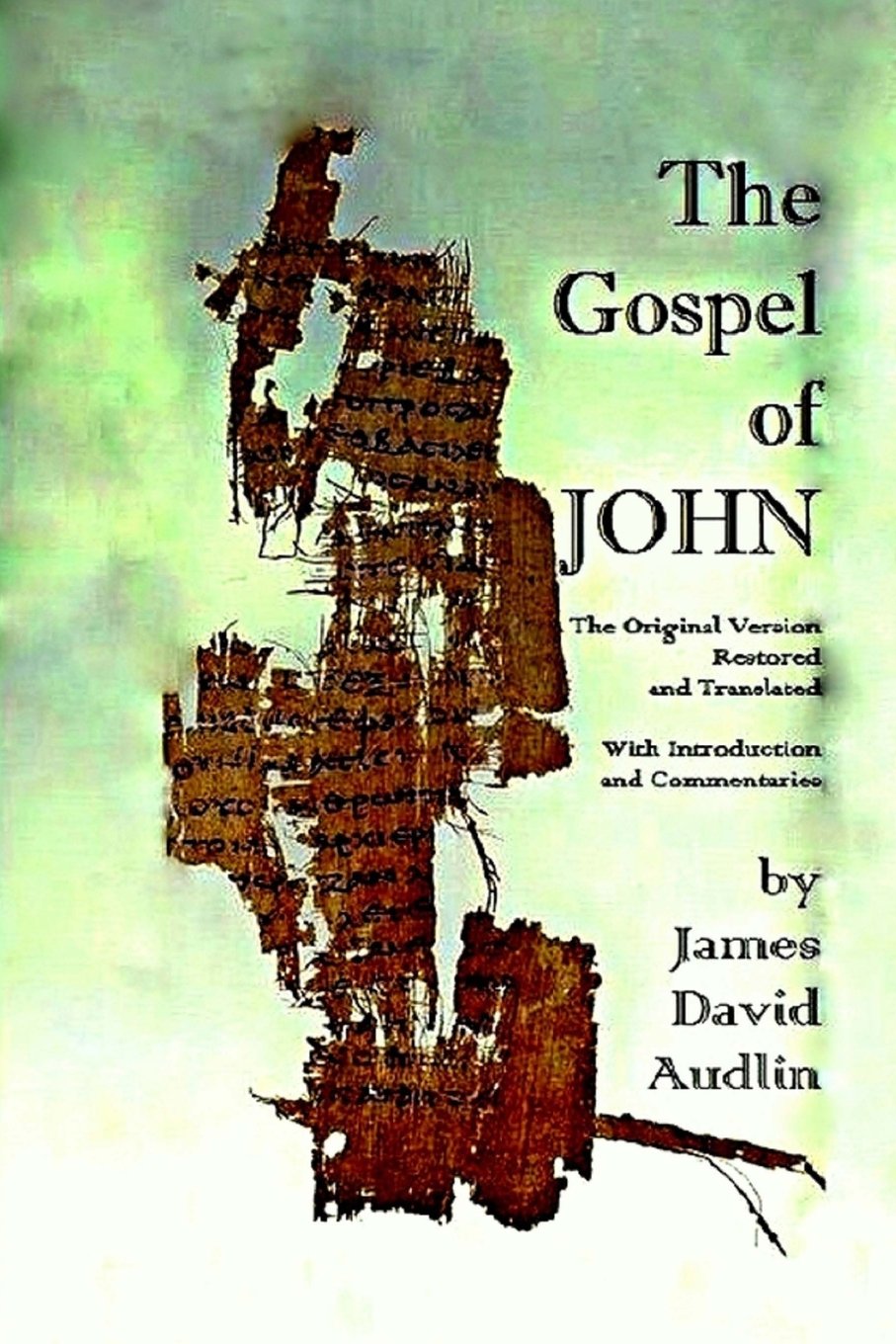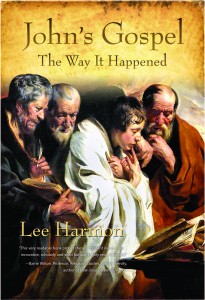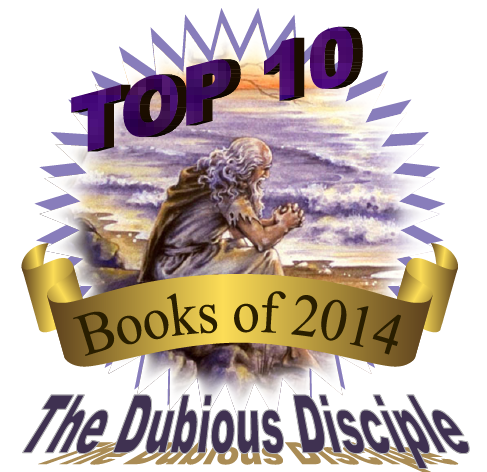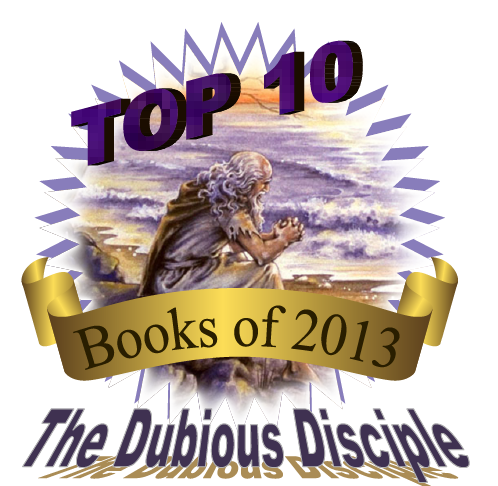John 1:32, The Logos (Part V of V)
And John bore witness, saying, “I saw the Spirit descending from heaven like a dove, and He remained upon Him”.
//Over the last few days, we’ve discussed two major religious themes: One, the Hellenistic idea of a Logos someday being sent from God to mankind, who would “reveal mysteries and make everything plain.” And two, a dream held by the Jews of a day when God Himself would step down from heaven and take an active part in governing the world, inaugurating the messianic age.
What we haven’t yet discussed is that the messianic age implies a Messiah. This Messiah was the expected hope of Israel, a man who would be anointed by God and who would overcome the world, leading to the age of God’s rule.
Enter John’s Gospel, and his ingenious prologue, which makes an astounding claim: Jesus is not merely the Messiah. Jesus is also the return of God. And Jesus is the dreamed-of Logos/Spirit. How can this be?
Answer: incarnation. We have a habit, today, of overlaying John’s story of incarnation atop the birth stories of Matthew and Luke, and assuming that incarnation occurred at birth or conception. But this is not the story John tells. Rather, John describes how God came down, in the form of a dove, and chose a host as a “tabernacle.” See today’s verse. Though John does not write about the baptism of Jesus, this appears to happen as Jesus comes up out of the water from being baptized (see the other three Gospels). On that day, God came to earth, anointed a Messiah, and sent the Logos; three in one.
As John’s Gospel made inroads into Christianity in the second century, this three-in-one being through incarnation would merge with the baptismal formula of the other Gospels, where baptism was performed in the name of the “Father, Son and Holy Ghost.” God, Jesus, and Logos/Spirit. The Trinity was born.
John 1:1, the Logos (Part I of V)
In the beginning was the Logos.
//John’s Gospel is a fascinating and complex theological work, painting Christianity (which was itself an offshoot of Judaism) with a Hellenistic brush. I thought it might be enlightening to discuss the Logos, John’s word for the pre-existing Christ. In most all Bible versions, the Greek word Logos has been translated to Word.
But what is a Logos? Why does John use this word to describe Christ?
Logos is the mind of God controlling this world, the force changing it from chaos to order, and for hundreds of years before Jesus came, it portrayed a philosophical line of thought known well by all learned men in the Hellenistic world, much as scholars today might discuss evolution or Einstein’s Theory of Relativity.
Plato (remember him?) reportedly once said to his followers, “It may be that someday there will come forth from God a Logos, who will reveal all mysteries and make everything plain.” The idea of the Logos, or Word, began back in the sixth century BCE among the Greeks, in the very city in which John’s Gospel was supposedly written (Ephesus). Its roots go deep into Stoicism, where it is perceived as a sort of cosmic reason, giving order and structure to the universe. In Stoic thought, Logos was Reason, the impersonal, rational principle governing the universe. This principle was thought to pervade the entire universe and was indeed the only god recognized by the Stoics.
If Plato really uttered these words, it turns out he was right. This Logos, says John, is what came from God to visit us on earth in the first century.
In the beginning was the Logos,
and the Logos was with God,
and the Logos was God.
An “Unapologetic Liberal Theological Viewpoint”
Celebrate with me the arrival of my new book this week! I just got copies.
John’s Gospel: The Way It Happened is the sequel to my book about Revelation. Click here www.dubiousdisciple.com/purchase if you would like an autographed copy, weeks before it’s official release! (It won’t hit stores until March 1, though it’s available for pre-order at Amazon). And guys, it’s gorgeous! If you need a cover designer, I know the one you want.
To give you a flavor for the content, here is a portion of a review from Dave Hershey’s blog. It’s from his review that I learned I’m an “unapologetic liberal.” Guilty as charged!
*********
About 2/3 of the way through his book John’s Gospel: The Way it Happened, Lee Harmon writes, “John promotes the idea that literalists and non-literalists may coexist” (202). This statement shows the hopefulness behind Lee’s writing, a hopefulness that Christians of different theological persuasions could lay aside, or maybe even embrace, their differences and work together for Jesus’ vision of the kingdom. Such a hopeful attitude is one reason I appreciate this book, even though I am not of the same theological persuasion as Lee.
This book is a commentary on the gospel of John in the form of a historical-fiction account of John himself dictating the gospel. Lee comes at John’s gospel from an unapologetic liberal theological viewpoint. This attitude and the interpretation that goes with may certainly anger some people. When he writes of the miracle of Jesus feeding the five thousand with a few loaves and fishes, it becomes a “miracle” that everyone was willing to share the food they had already brought! In other words, not the sort of miracle those of a more conservative theological bent will appreciate.
Had I read this book a few years ago I may have become quite angry with such things. But over the years I have learned to appreciate, and learn from, those of different views then my own. I would go so far as to say I enjoy books like this one more than reading book after book that props up what I already believe. Maybe literalists and non-literalists just need to read each other’s books with a bit more grace then usual and once that happens we can get to the co-existing part.
Read the full review here: http://davehershey.wordpress.com/2012/12/08/johns-gospel-the-way-it-might-have-happened/

Book review: The Gospel of John
by James David Audlin
★★★★★
Controversial research, good writing, and an approach to the Jesus story as a puzzle to be solved makes for an enthralling read. There’s so much insightful commentary in this one that I couldn’t begin to measure where I agree versus where I disagree, but that’s hardly the way I evaluate books anyway. I want something that makes me think, and this one does.
My one complaint with the book is that it’s a bit slow getting started. The intro, which serves mostly to present credentials, was wordy. What you need to know is that Audlin presents his own translation of John’s Gospel, with liberal commentary, and in so doing makes an effort to restore it as close as possible to its original format and flavor. Late glosses and interpolations are removed, sections are repositioned where they appear to be out of order, words or phrases are restored where they appear missing, and certain current-day conventions and phraseology that distort the message have been swept away. One drawback to this reordering, of course, is that it makes for an awkward reference digest; while detailed by chapter-and-verse, the text is all out of order.
Audlin shares with me a belief that there was an early composition of John’s Gospel, decades before its final form. He finds the most likely scenario of how this “early” John’s Gospel came to be as such: Lazarus, the man whom Jesus restores to life, is the Beloved Disciple and the main voice behind the Gospel. The Gospel is a corroboration between Lazarus and John Mark, the author of all five of the Johannine documents. Lazarus dictated the story of Jesus to John Mark, but the final project was derailed, probably by the war. [Correction provided by the author: The amanuensis was not John Mark, but John the Presbyter.] It was later collected and organized by a redactor, and subjected to further changes by other anonymous contributors. It is the original form that Audlin hopes to present in his translation … not merely the words they left behind, but the intended composition.
Adding to the complexity of this task is Audlin’s contention that certain original themes were downplayed during the redaction process, sometimes by even removing text that John Mark had written. For example, Audlin concludes that the marriage in Cana was of Jesus and Mary Magdalene, but anything suggesting that Jesus was the bridegroom in the story was extracted by the redactor.
Audlin puts a great deal of trust in the Beloved Disciple, as the eyewitness, in presenting historical truth. This lets Audlin interpret much of the text (that which he attributes to the Beloved Disciple) with brutal precision. When John’s Gospel tells how the almighty Roman Empire bowed in obeisance to a lowly Jewish rabbi (Jesus, at the arrest site), it really happened as written! This refreshing trust is not naivete on Audlin’s part, since he hardly reads the Bible as inspired. He certainly has no such trust in the writer of Matthew’s Gospel!
Many of Audlin’s conclusions are based on Aramaic idioms and the Peshitta (the Syriac, an eastern Aramaic New Testament of disputed authorship and origin, which contained most of the canon of today’s Bible), and I must confess, of this analysis I can contribute nothing. I am thus unable to evaluate the strength or weaknesses of Audlin’s linguistic arguments, and they do form much of the foundation of his scholarship.
One of the idiosyncrasies of Audlin’s thesis (again, drawing heavily on the Peshitta) is the collapse of many Bible characters into one big happy family (well, maybe not so happy). Among these family ties we can count Jesus, Mary Magdalene (his wife), Martha, Simon the Leper, Joseph of Arimathea, the Beloved Disciple, Peter, John Mark, John the Baptist, John the Presbyter, Lazarus, Thomas, the Samaritan woman at the well, Barabbas, Judas, and surely a few more I didn’t catch. Some of these names collapse further into a single person; Lazarus, for example, is also Barabbas and the Beloved Disciple.
So, yes, Audlin’s work is surprising, edgy, opinionated, and yet deeply researched. Small wonder that he grows a bit compulsive in detailing his credentials! This project was clearly a labor of love and his appreciation shines for the original beauty of the Gospel, even as his distaste for the clumsy insertions and distractions of the redactor also shows through. He and I share both feelings, and in fact, we share many other unconventional conclusions, and listing a few will give a feel for the flavor of the writing:
1. The Gospel is not at all chronological, and really indicates closer to a one-year ministry for Jesus rather than three years, though Audlin and I disagree on the reason for the jumbled format.
2. We agree that conservative Christianity has mangled the meaning of “eternal life” in this Gospel; Audlin has opted to simply revert to John’s original word, aeon. Jesus promises “aeonic life.” That’s probably best, and in one of many essays at the end of the book, Audlin carefully attempts to put the original flavor back in Jesus’ promise.
3. We agree that the text probably says Jesus did not walk on water (though other Gospels do).
4. We agree that Jesus, himself, did not consider himself any more “one with God” than the rest of humanity.
On the other hand, we disagree pretty strongly on other topics! I encourage both an open mind and a discerning eye, and plenty of time to wrangle with the ideas.

John 4:24, God is Spirit
God is spirit, and his worshipers must worship in spirit and in truth.
These are the words of Jesus, to the woman of Samaria. She was asking whether it was correct to worship God at the holy place of the Jews or of the Samaritans. Jesus’ reply made it clear God would not be found “in” a place.
The above verse is from the NIV translation; let me give it to you again in our familiar King James version:
God is a Spirit: and they that worship him must worship him in spirit and in truth.
See the difference? How the KJV made assumptions about the nature of God, which the NIV corrected by retranslating the original Greek? God is not “a Spirit” (capital S), God is “spirit.” You don’t worship “him” in spirit, you merely worship in spirit. John’s Gospel, we all realize, is the most esoteric or spiritual of the four, and this is critical to understanding the Johannine writings.
God is not “a” love. God is love. God is not “a” light, or “a” life,” or “a” spirit, or “a” anything. God just is. Give up trying to point to him, because there is no “him” to point to. As The Shack would say, God is a verb.
In my opinion, grasping this basic difference will take you a long way to understanding John’s point of view.













 354 Circles
354 Circles
 603 Goodreads Friends & Fans
603 Goodreads Friends & Fans

 Hello! I'm an author, historical Jesus scholar, book reviewer, and liberal Christian, which means I appreciate and attempt to exercise the humanitarian teachings of Jesus without getting hung up on any particular supernatural or religious beliefs.
The Bible is a magnificent book that has inspired and spiritually fed generations for thousands of years, and each new century seems to bring a deeper understanding of life’s purpose. This is true of not only Christianity; through the years, our age-old religions are slowly transforming from superstitious rituals into humanitarian philosophies. In short, we are growing up, and I am thrilled to be riding the wave.
I avidly read all thought-provoking religion titles. New authors: I'd love to read and review your book!
Hello! I'm an author, historical Jesus scholar, book reviewer, and liberal Christian, which means I appreciate and attempt to exercise the humanitarian teachings of Jesus without getting hung up on any particular supernatural or religious beliefs.
The Bible is a magnificent book that has inspired and spiritually fed generations for thousands of years, and each new century seems to bring a deeper understanding of life’s purpose. This is true of not only Christianity; through the years, our age-old religions are slowly transforming from superstitious rituals into humanitarian philosophies. In short, we are growing up, and I am thrilled to be riding the wave.
I avidly read all thought-provoking religion titles. New authors: I'd love to read and review your book!
 Hi! While Lee writes the articles and reviews the books, I edit, organize, and maintain the blog. The views expressed here are Lee's but I'm his biggest supporter! :-)
Hi! While Lee writes the articles and reviews the books, I edit, organize, and maintain the blog. The views expressed here are Lee's but I'm his biggest supporter! :-)
Connect With Me!